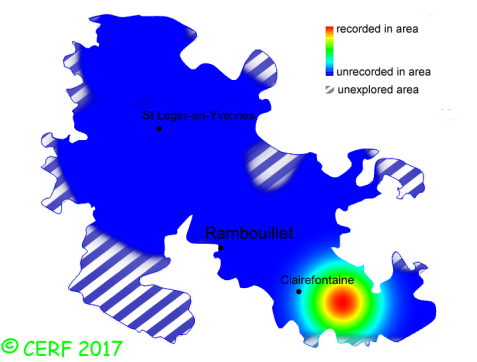|
Cystolepiota bucknallii (Berk. & Broome) Singer & Clémençon
|
common name(s) : Lilac Dapperling
New classification: Basidiomycota/Agaricomycotina/Agaricomycetes/Agaricomycetidae/Agaricales/Agaricaceae
Former classification: Basidiomycota/Homobasidiomycetes/Agaricomycetideae/Agaricales/Lepiotaceae/Lepioteae
synonyms: Cystoderma bucknallii, Lepiota bucknallii
(unconfirmed synonyms: Cystolepiota bucknalii)
edibility : discard
|
|
|
The cap is pale lilac to violet.
The cap surface is smooth, not viscid nor sticky.
The stem is smooth, with a short-lived ring.
The flesh is unchanging; its taste is mild; the odour is unpleasant;
its texture is fibrous.
The gills are adnate, distant .
The spore print is white. This species is saprophytic.
It grows on the ground, in the woods, on a rather calcareous soil.
The fruiting period takes place from July to November.
| Dimensions: | width of cap approximately 3 cm (between 1 and 5 cm) |
| | height of stem approximately 5 cm (between 2 and 10 cm) |
| | thickness of stem (at largest section) approximately 3 mm (between 2 and 5 mm) |
Chemical tests : none.
Distinctive features : pale lilac to purple cap; odour of gas-tar
Cystolepiota bucknallii is rare and confined in the forest of Rambouillet, and is infrequent, more generally speaking
.
|  | | Above : distribution map of Cystolepiota bucknallii in the forest of Rambouillet |
|
page updated on 14/01/18